Transit of Venus 2004Transit of Venus 2004
I'll admit that visually, the crossing of Venus before the sun isn't
particularly spectacular. I went to the east to see it more for the
history and rarity of it. It happens just twice every 120 years or
so. The next one is in 2012.
Some went to Europe where they could see the whole transit, but actually
much of the transit is boring. I felt it would be more interesting (and
closer) to chance seeing it at sunrise or sunset, where it would be
briefly visible to the naked eye. At all other times it must be seen
with a strong solar filter.
I sought to find a place where I could photograph the transit with something
interesting in the foreground. My original plan was to go to Port Credit
or the mouth of the Humber, where the Toronto skyline would sit in front of
the rising Sun and Venus. However, I ended up in the Kawartha lakes,
photographing from a boat on Stony Lake. The unfiltered shots allow a
fast exposure, so handheld telephoto was possible.
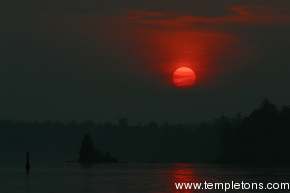 | | (1280 x 853 - 32K) |
| |
|
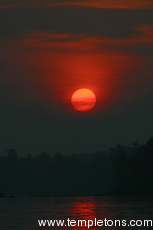 | | (683 x 1024 - 25K) |
| |
 | | (1280 x 853 - 33K) |
|
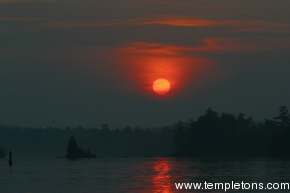 | | (1280 x 853 - 41K) |
| |
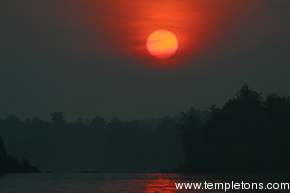 | | (1280 x 853 - 33K) |
|
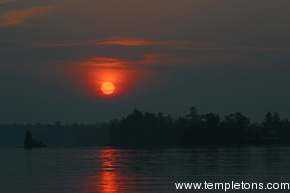 | | (1280 x 853 - 45K) |
| |
 | | (683 x 1024 - 31K) |
|
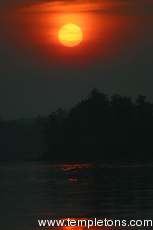 | | (683 x 1024 - 27K) |
| |
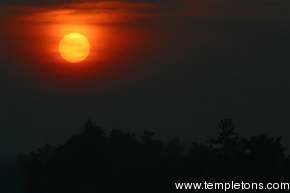 | | (1280 x 853 - 30K) |
|
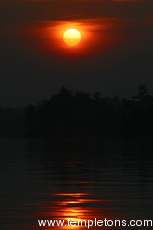 | | (683 x 1024 - 30K) |
| |
 | | (1280 x 853 - 22K) |
|
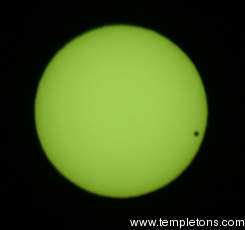 | | (684 x 641 - 48K) |
| |
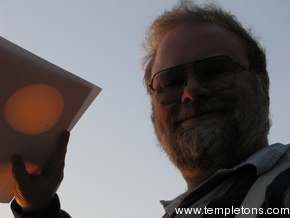 | | (1280 x 960 - 76K) |
|
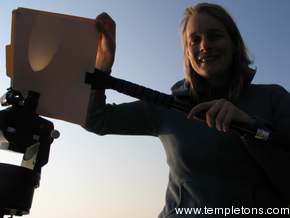 | | (1280 x 960 - 69K) |
| |
In the end, we had some strange luck that gave me some of the best shots
I have seen, if I do say so myself. Most of the shots I have seen show
just the Sun and Venus, or very minimal scenery or perhaps clouds or a plane
in front of the Sun.
The luck was that there was a thick haze that day, due to high humidity.
This blocked the Sun at sunrise itself, but allowed the transit to be
visible to the naked eye for many minutes, and photographable without
a filter as well.
The haze made streaks on the Sun that, combined with the dot, reminded
us of Jupiter. I was able to capture many shots with the Sun reflected
on the lake, and birds flying and in the foreground.
After it got too bright to photograph without a filter, we moved to
a concrete dock (which could not see the horizon so well) to observe
with a telescope, primarily by projection. The haze made my filter
a bit too dark. Also shot with the camera and a 600mm equivalent
lens on the D60. We observed and timed 3rd and 4th contact and the
teardrop.
Most shots taken with the Canon D60 with 200mm zoom and 1.4 extender,
for equivalent focal length of 448mm at f/5.6. Green shot taken
with 2x extender.













